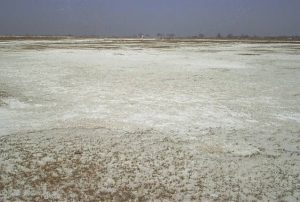Chapter 12: Herbicide Discovery and Classification
12.3 History of Herbicides
It is interesting to see the development and historical use of herbicides, including some of the lessons learned along the way. It turns out that even back in the Roman Empire Era, they had discovered that if there is a high salt concentration in the soil, many plants are unable to grow, so they would actually use salt as a herbicide. The first synthetic herbicide was 2,4-D, which came about during World War II (1946). It was used in the war efforts to defoliate some of the vegetation and so obviously then, it became a good herbicide.

A few more herbicides were discovered in the 1970’s at the same time we started recognizing unintended consequences of some of these chemistries. It is also during this time that regulations began to be put in place to better guide the safe use of the herbicides. In fact, some were pulled off the market because of their toxicities. Since the release of 2,4-D, more than 270 herbicidal active ingredients have been commercialized.
In the 1990’s we started seeing the impacts of genetic engineering technology, ie RoundUp Ready and LibertyLink crops. With genetic engineering technology a gene is added to the crop variety or hybrid which makes it essentially resistant to the herbicide. These gave us new options of being able to use herbicides that before would have severely damaged our crops. The drawback is that transgenic (genetically engineered) crops are expensive to develop and must pass governmental oversights to insure their safety. Some markets may not allow transgenic crops (ie organic foods, some countries).